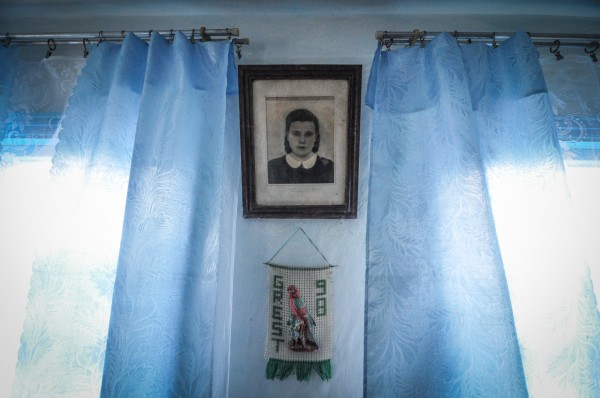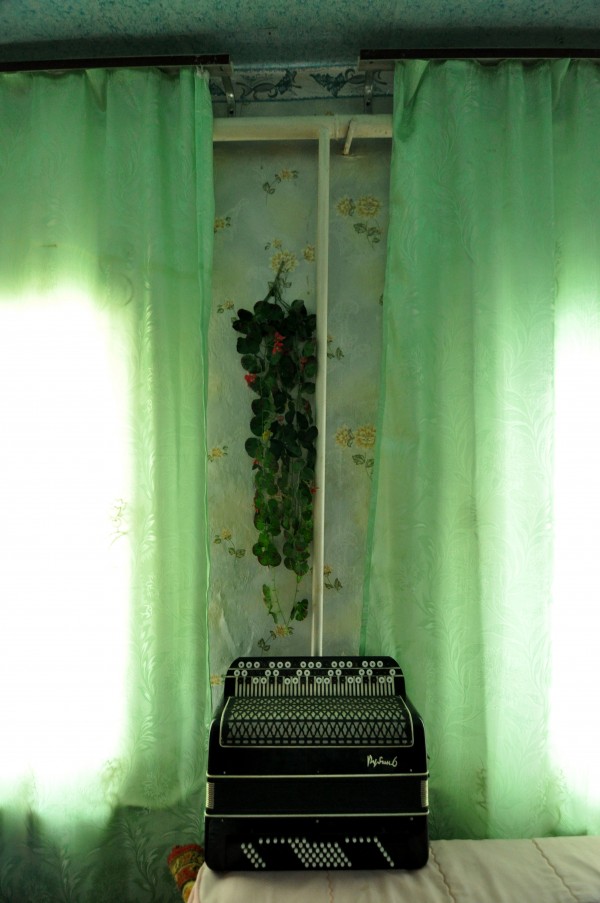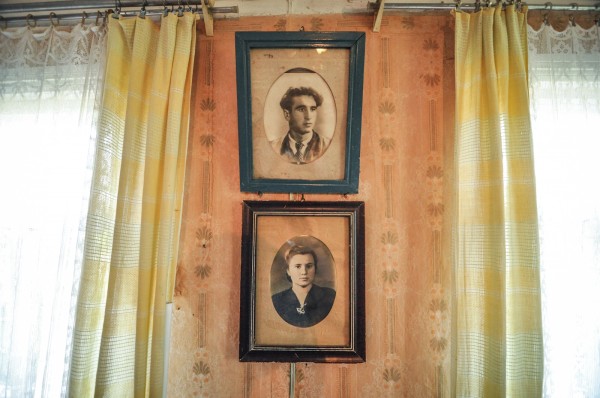On words and photography:
Putting words with photographs, especially quotations from interviews, can often change the meaning of an image. I was reminded of this recently when I visited the Photographer’s Gallery in London to see an exhibition about early Russian colour photography (reviewed by Lewis Bush here). Not least due to my ignorance of Russian photographic history, it was not until I read the captions, titles and image-descriptions that the photographs made sense; words changed their meanings.
I have hundreds of hours of recorded interviews with people who live near Chernobyl in Ukraine. They sit transcribed on my laptop, slowly working their way into my PhD thesis. I have started working on a small project called Chernobyl Interiors that matches some of these quotations with photographs I made in the intimate spaces of the participants’ houses around the Exclusion Zone.
So often Chernobyl is portrayed photographically as an abandoned, ‘dead’ and decaying place, but it is a landscape that people live with. It is home to many people who dwell in the shadow of uncertainty and nuclear pollution, but also by people who laugh, cry, fall in love and live lives that we would all recognise.
The photographs, like the one above are nothing special; they are rather banal interior shots of the homes I was invited into. But put next to quotations from people who live in these houses and they are transformed – perhaps even seen differently:
“My son was 23 and the other was 24
when they died. It was radiation from
Chernobyl.
I used to sing and play the accordion in
the local house of culture, but now
that my children are dead I don’t sing
anymore”
I remember this interview very well, a sad story of suffering and loss that was far from unique in this nuclear landscape. Though the quotation above gives no more than a ‘snapshot’ into this mother’s wider story, it also gives the photograph a new significance, and perhaps provides a deeper way of narrating the ongoing story of Chernobyl.
Susan Sontag – one of the more prominent scholars of photography – said:
“Photographs – and quotations – seem, because they are taken to be pieces of reality, more authentic than extended literary narratives”
There is an advantage of only seeing (or reading) a snapshot of a complex story; it discards the clutter and complexities of everyday life, distilling and framing a message to the viewer in a particular way. But with this comes its own set of problems. Photographs hide as much than they reveal: at best – sanitizing reality – at worst – changing it.
Photography, perhaps more than any other medium of communication, lays bare what Feminist-theorist Donna Haraway calls our ‘positionality’: The idea that all knowledge – be it contained within a photograph or in academic discourse – is created by individuals who are ‘situated’ with their own subjective perspectives and embedded within power structures that influence the creation of that situated knowledge.
Moreover, photography contains a unique disconnect – that photographs can simultaneously be both ‘fact’ and ‘subjection’. There is an unresolved tension between photography’s use to document ‘data’ (crime scenes, mugshots, war photojournalism, ‘evidence’ etc.), and the highly positioned nature of each photograph being a personal and curated slice of reality: each time a photographer raises the camera to their face to frame a picture they make a subjective choice.
Street photographer Garry Winogrand once commented on photography that:
“putting four edges around a collection of information or facts transforms it”
Of course the same can be said about a quote from an interview. Instead of four edges we use quotation marks, composing the spoken word from a choice of baggier utterances, leaving unwanted information outside the verbal frame.
In Chernobyl Interiors I want to be reflexive about this process, as both the images and quotes have been framed by my situated self. This is in contrast to my other Chernobyl project Disposable Citizens, in which people were given disposable film cameras to document their own lives and give their own view of their world.
The title of the exhibition I visited on early Russian colour photography was ‘Primrose’. I did not understand the significance of this until I watched an interview with the curator Olga Sviblova. She explained that Primroses are often the first flowers to bloom in the thaw of Spring after the long snow-covered darkness of Russian winters. They bring colour into Russia’s monochrome landscape. “Its like the sun arriving from the earth” she said, and with those words, it made sense.
# Chernobyl, Chernobyl Interiors, Gary Winogrand, photography, positionality, Susan Sontag
0








Leave a Reply